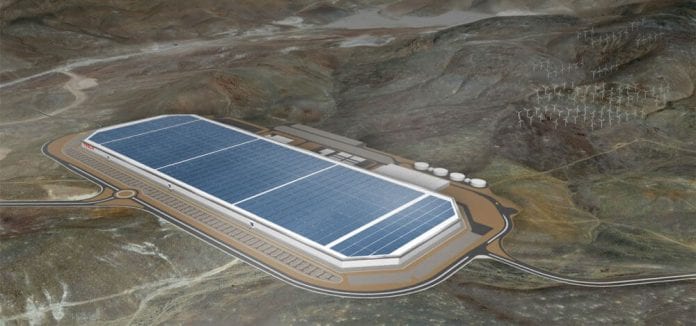Tesla Motors Inc (NASDAQ:TSLA) is rushing to complete a massive $5 billion gigafactory in Sparks, Nevada. The factory is part of Tesla’s plan to meet the demand of standard sedan type electric vehicles and other new types of vehicles in development, according to CEO Elon Musk.
Tesla is so focused on finishing the building that it has doubled the amount of workers working on the construction. Now, 1,000 workers build the factory for seven days a week in a double shift. The facility, which sits on a 3,000-acre land, will start producing lithium-ion cells by 2017 if all goes well for the motor company.
Tesla’s primary objective at the moment is to complete the factory before the launch of the Model 3 Sedan next year. The Model 3 Sedan will cost only $35,000, which is half the price of Tesla’s Model S. Earlier this year, Tesla allowed people to book the Model 3 Sedan. The demand was so good that Musk to set a 500,000 sales target by 2018. Musk also raised $1.7 billion via stock offering to speed up the factory construction and consequently the battery production. The battery production is expected to reduce the cost of electric vehicles significantly.
The Giga Factory is less than a sixth of its anticipated final size. The building structure accommodates temporary relocatable walls. The building is finished up to the 4th story. That portion of the building, alone, has a 1.9 million square feet floor space.
Tesla is importing the battery cells from Japanese electronics giant, Panasonic. However, the automobile company is building the battery storage in the Giga factory. Panasonic committed $1.6 billion to the battery factory. Unfortunately, Panasonic is short on the manpower required to produce battery cells for Tesla. According to Panasonic’s chief executive in North America, Joe Taylor, “We are running all over hiring people.”
Tesla has laid out an aggressive expansion plan, which includes the manufacture of heavier vehicles and energy storage. The latter has resulted in a partnership between Tesla and SolarCity Corp. The roof of the enormous battery factory will sport SolarCity’s solar panels. Also, a solar panel field, to be constructed nearby, will provide extra energy to the plant. Musk, who is the principal shareholder in both Tesla and SolarCity has in the recent past proposed a merge for the two companies for $2.8 billion.
On completion, the Giga factory will produce 105-gigawatt hours of battery cells in 4 years. 105-gigawatt hours are capable of powering 1.2 million Model S sedans. Tesla built 50,000 Model S sedans in 2015. Lithium-ion battery cells are currently only made in Asia. Tesla’s factory will be the first facility in the world to produce the 21/70 battery format instead of the 18/650 now used in EVs. The cells produced by Tesla will have huge demand. Tesla shortly will start production of other EVs such as a light pick-up truck, a heavy-duty truck a sport-utility vehicle and a bus.
After successful completion of the Giga factory, Tesla will outshine all battery plants in factors of 10. The construction of the plant has led to the increase in efforts to mine lithium in North America.









